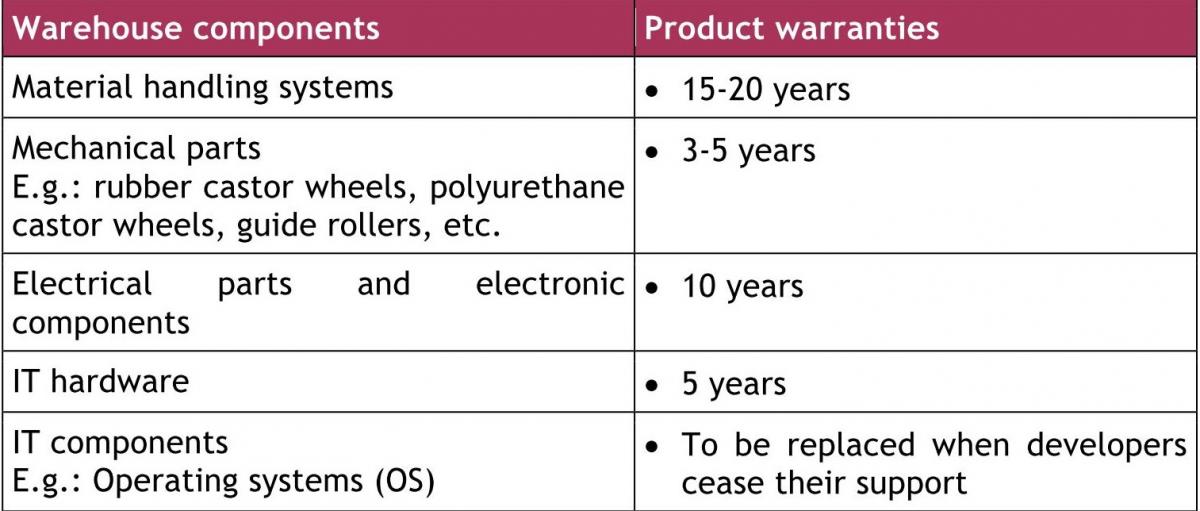Warehouses are full of specialised equipment that move, store, control, and protect goods safely and efficiently through the manufacturing and distribution process. Regular maintenance of all warehouse equipment helps ensure that a warehouse is kept running well, yet many companies hold the misconception that maintenance is irrelevant, costly, and a waste of resources. What these firms fail to realise is that breakdowns result in unexpected downtime, which incur much higher costs overall than the occasional maintenance.
Here are four common misconceptions about warehouse maintenance and upgrading, and why businesses should properly evaluate their options.
Myth #1: Regular maintenance and upgrading are not necessary
Maintenance of material handling systems, or any other electro-mechanical machines, is very much like maintaining oral hygiene. Regular visits to the dentist, as well as daily brushing, will prevent or delay major dental bills (and crippling pain!). Similarly, regular inspection of material handling systems reduces the risk of unexpected major equipment failures, as problematic areas would already have been identified in routine checks.
Operation teams may be tempted to forgo maintenance altogether as a way of cutting costs. However, the short-term gain of saving money on maintenance will lead to the long-term pain of fixing unplanned breakdowns, which can result in hefty costs due to prolonged downtime. For example, companies who have to undergo unscheduled maintenance and repairs may not be able to service their respective customers in a timely manner, putting the company’s reputation and ability to retain customers at risk.
Myth #2: Equipment upgrades are only necessary when it breaks down
From shutter doors to conveyors and sensors, each piece of equipment is vital in ensuring that warehouses continue their high throughput. The breakdown of one small part can result in a complete halt in operations, making it imperative that companies conduct regular checks on all equipment. In fact, companies typically upgrade and revamp equipment for two main reasons: obsolete components, or changes in operational conditions.
Obsolete components
A material handling system that was installed five years ago may still serve a company perfectly in terms of speed and capacity, but as time passes, the system will require an ever-increasing amount of attention. In today’s dynamic environment, in which innovations are rapidly advancing processing capabilities, state-ofthe-art equipment can quickly become obsolete.
Replacing these obsolete parts often come with a high price tag. Even if the parts can be sourced from thirdparty companies, the price of these parts often match the obscurity — the harder it is to find the parts, the higher its price. Hence, operation teams need to regularly check on any parts’ lifespan and warranty. If the end of a product warranty is fast approaching, replacement parts need to be sourced and installed as soon as possible. As a rough guide:

(Source: Consoveyo)
Changes in operational conditions
Another scenario where material handling systems might need to be upgraded is when operational conditions change. For example, a company’s throughput requirement may have increased, or the company may find that the material flow process is no longer ideal. In such cases, operation teams should review the current equipment installed and determine if it needs to be upgraded to satisfy the new requirements.
Myth #3: Upgrades and revamps are cost prohibitive
Many companies also have the misconception that fixing unplanned breakdowns are somehow less costly than preventive maintenance, as the latter requires more frequent parts replacement. In reality, revamping or upgrading equipment usually works out to about 20–30% of the cost required to replace defunct equipment. Most of the high cost can be attributed to the prolonged downtime required for the installation of the replacement equipment.
For example, Consoveyo upgraded a furniture supplier’s electrical and operational system, and installed a new Warehouse Management System (WMS) at less than half the cost of a brand new operational system.
Myth #4: Upgrades and revamps require lengthy downtime
The last misconception most manufacturers and distributors have is that entire warehouse operations need to come to a halt because systems must be upgraded at the same time. In reality, the upgrade can be carried out in phases, eliminating any disruptions to operations.
Companies also fear that if one section of the warehouse experiences downtime, it will affect other sections as well, leading to underperformance in key functional areas. OEMs like Consoveyo can help mitigate such fears, as they offer the flexibility to upgrade operational systems on weeknights and weekends, minimising any impact on operations.
Ultimately, companies need to keep in mind that revamping usually needs to be carried out every 10–15 years, but this frequency also highly depends on the level of warehouse usage.
Regular maintenance and upgrading can help keep warehouses operating at full capacity, keep products safe, and help reduce the cost of production and operations by simply preventing equipment breakdowns. Where operating teams may not be well-equipped with the knowledge to create a suitable maintenance schedule, they can tap on the expertise of authorised equipment specialists like Consoveyo to create and carry out maintenance on a fixed schedule — all without breaking the bank
AIr Jordan Outdoor Basketball Shoes














